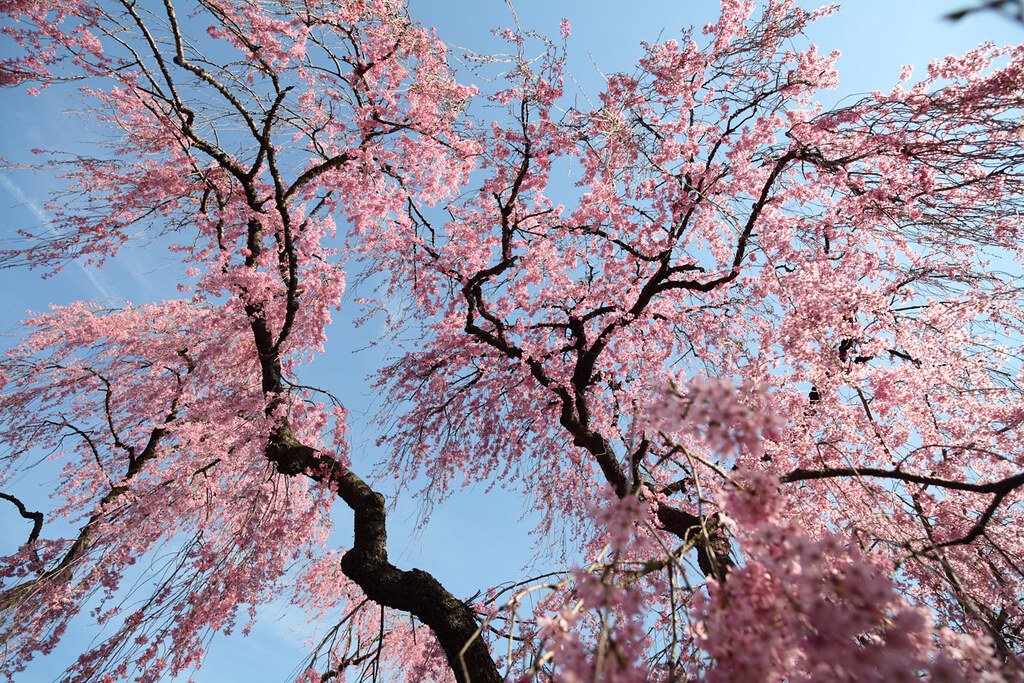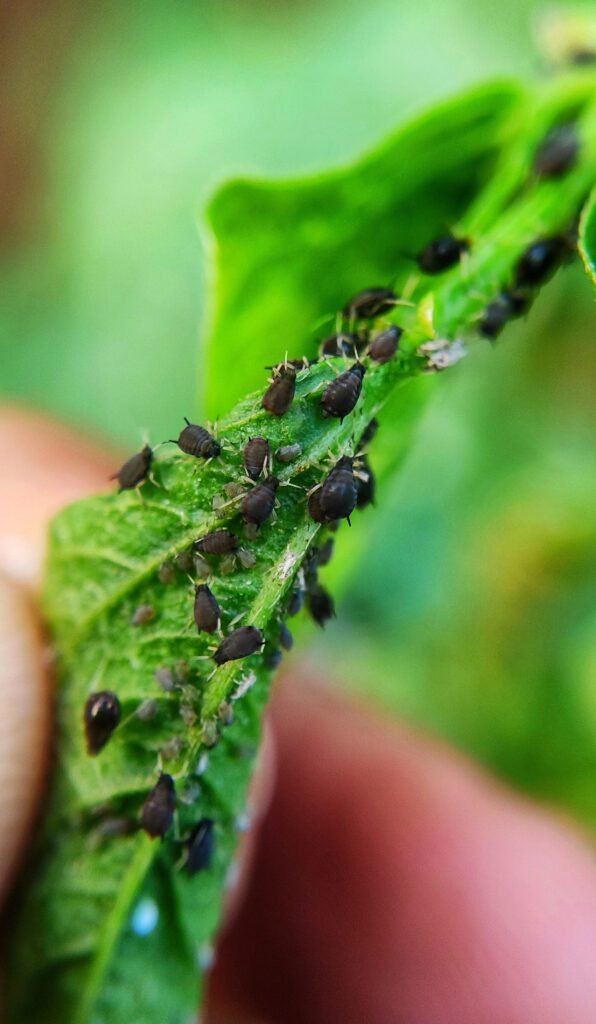Cherry Blossom Tree Seeds-How to Tips

Cherry blossom tree seeds uniquely provide gardeners and enthusiasts a great chance to grow one of the world’s most iconic and beautiful trees. Cherry blossom trees, specifically the famed “Sakura” types known for their pale pink and white petals that bloom in April, come from the Prunus genus of trees and are revered worldwide for their powerful association with rebirth, appeal, and well-being. This is a great way for those with a green thumb (or who want to discover one) to bond with nature and care for their tree, which will one day add to the spectacularness of spring.
But that is a long-term commitment and understanding of the self-seeding phenomena, as cherry blossom seeds being processed to grow inside your home require suitable arrangements like cool stratification. Whether adding an ornamental touch to your existing garden or creating a full-blown home cherry blossom viewing experience, knowing the basics of Cherry Blossom Tree Seeds is essential when it comes to growing these wonderful, culturally significant trees.
Table of Contents
ToggleThe Uniqueness of Cherry Blossom Tree Seeds
The essence of cherry blossom tree seeds is that they are the only seeds from which you can grow a tree that might just be one of the most beautiful and, on some level, culturally important in the world. Unlike other species of blooming trees, cherry blossoms are well known for their ethereal beauty, with their pink and white petals only spanning a few days to one week long each spring in extraordinary displays that have inspired art, poetry, and festivals throughout history; most significantly in Japan. These seeds are your chance to recreate this natural spectacle in your very own gardens, turning them into calm and tranquil environments bursting with the allure of a blossoming Cherry Tree.
Cherry blossom tree seeds have a completely different dormancy period, which only mirrors nature. The seeds of these plants are often dormant and need to undergo cold stratification, characterized by a chill period, to germinate. However, this trait not only provides the cultivation of cherry blossoms a more personal touch but also an expectation and a reward, which is characteristic to any gardener who watches their seeds evolve after months. Further, by being sown from seed, cherry blossom trees can have greater robustness and knowledge of their local habitat than grafted or transplanted ones due to experience derived in youth.
Given all of their favorite value, the cherry blossom seeds are far away from a cosmetic-only specialty; they symbolize an ancient ritual for life and one that blossoms beautifully when you take care of them delicately and have patience with yours.

Cherry Blossom Tree Seeds Varieties
Different kinds of cherry blossoms, foliage, and habits this is crucial information when picking out cherry blossom seeds to get the right tree for your area and taste. Here are some popular types:
Japanese Cherry Trees (Prunus serrulata)
The common name is the “Sakura” tree, Japan’s national variety and the most popular type of cherry associated with cherry blossoms.
Appearance: They have fragrant-smelling flowers that pale pink to white.
Growth: In cooler climes, you may need soil that drains well.


Yoshino Cherry (Prunus x yedoensis)
Beautiful, but it really only blooms in early spring.
A hybrid most commonly found in Japanese gardens and along streets during cherry blossom festivals.
Flower: White-pink, dainty, buttery flowers that open scute of a pea flower appearing like clouds
It is Fast-growing and hardy for USDA zones 5-8.
Weeping Cherry (Prunus subhirtella ‘Pendula’)
Prized for its weeping arrangement that produces flowers like fell water.
Appearance: Has pink or white blossoms that bloom before leaves are birthed full*scale;
Cultivation: Full sun, adaptable to a wide range of soil types.

Higan Cherry (Prunus subhirtella)
A Hardy plant that blooms in early spring and is adaptable to various climates.
Attractive pale pink flowers with multiple weeks of bloom.
Growing: This is a very strong tree, suitable for growing in Zone 4-8, making it one of the more helpful cherry blossoms out there.
All these types have different needs and characteristics, so you must pick the one that’s right for you, depending on your home location and what kind of look you want.

Preparing for Planting
It takes time to grow a cherry blossom tree from seed. It is a process in which the seeds need to experience cold, heat, or some other external factor to lose dormancy and germinate.
Stratification
Most cherry blossom seeds need cold stratification to help induce the dormancy and germination of winter conditions. Follow these steps:
Step 1
Clean the seeds by fully submerging them in water for 24 hours. To do away with any pulp and soften the seed coat.
Step 2
Put the seeds in a plastic bag with sand or peat moss. Water should be there in the medium(moisture but should not be soaked)
Step 3
Seal the bag and place it in the fridge for 8-12 weeks. You certainly don’t want the temperature to fluctuate even slightly between 35-41°F (1.6-5°C).
Scarification (Optional)
In fact, poor seed germination may be sacrificed before going through cold stratification. Make a tiny scratch on the surface of the cherry blossom seeds to let water in more easily. Gently sand the seeds with a fine sandpaper and soak in water.
Timing and Sowing
The seeds are, after stratification, ready for planting. However, timing is key; sow in late winter or early spring for the best germination rates.
Planting and Germination Process
When the seeds are prepared, you have nothing but to plant them. Cherry blossom seeds have very specific germination requirements, and attention to all stages of growth is essential on order sites.
Choosing the Right Soil
Purchased cherry blossom trees like to have permeable, organic-rich soil. Make sure when you are planting your seeds, you use a sandy loam mix. To go the extra mile, you can enrich that new garden soil with some compost to allow it to provide even more nutrition.
Sowing the Seeds

Step 1: Fill small pots or seed trays with the prepared soil mix.
Step 2: Sow seeds around 1/2 inch (or 13 mm) deep and lightly cover with soil.
Step 3: Water the soil lightly, keeping it slightly moist and not wet.
Providing Optimal Conditions
Light: Site the pots so they are in dappled or partial shade.
Temperature: Needs a consistently warm environment of 65 – 75°F (18-24°C) for germination.
Moisture: Keep soil moist by watering regularly, being careful not to keep the soil too wet because this can create rot in the seeds.
Germination Timeline
Depending on the variety of the seed, it may take a few weeks to months before germination is possible. Persevere and keep looking after yourself during this time.
Growing and Maintaining
The important thing is that we nurture the seeds, which are bound to burst open and transform into a sapling! It comes down to having a healthy tree anywhere near your yard.
Transplanting the Seedlings
When: Transplant the seedlings at 2 to 4 inches (5 to 10 cm) height during the first two real leaf stages.
Method: Pot them up or plant them out carefully. When planting outside, ensure the site is partial to full sun with good drainage.

Watering and Fertilization
Watering: Watering a cherry blossom tree requires ample weekly watering, especially in its first few years. Deeply water once weekly, allowing the soil to dry slightly between watering.
Fertilizing: In late winter or early spring, feed with a balanced slow-release fertilizer before new growth begins. Do not overfeed now, or your Culcita will break and grow less.
Pruning and Shaping
Trimming: It will preserve the shape and health of the tree. Twist off all such dead or infected branches and the tangled mass for better ventilation and light currents.
Pruning: For trees like the weeping cherry, you can remove some branches here and there to create a different look.
Seasonal Care
However, cherry blossom trees require care, depending on the season.
Spring: Check the pests and diseases; if found, then Spain them; otherwise, leave them untreated.
Summer: Water your plants well and mulch around them to retain moisture.
Fall: Pick up leaves that have fallen to avoid diseases
Winters: Mulch or burlap wraps for young trees during harsh winters in cold regions.
Common Issues and How to Address Them

While Cherry Blossom trees are beautiful, they can be finicky creatures. For these problems to not only be identified but maintained as well, they have to know how.
Pests:
Aphids: tiny, suck sap displacement leaves. Control with insecticidal soap or neem oil.
Caterpillars: Defoliation of trees can occur within a short period. Organic pesticides can also be used to control them.
Diseases:
Cherry Leaf Spot: This is a fungal disease that leads to brown spots on leaves. Pick off infected leaves and use fungicide.
Powdery Mildew: Identified by a white powder on leaves, this fungus loves high humidity. Thin branches to improve air circulation and treat with fungicidal sprays. Read more about diseases here.
Environmental Stress:
Frost Damage: Cherry blossoms are prone to frost and can damage young cherry blossom trees. Cover with cloches for late spring frosts.
Drought: Poor watering can result in wilting and leaf shed. Regular watering, particularly during dry periods.
To sum it all up, cherry blossom tree seeds provide an enticing and rewarding method to plant the traditional elegance of cherry blossoms in your yard. This means they get to live the whole life cycle of this famous tree, from germinating a seed to having flowers that cultures worldwide have been fascinated with for centuries.
Growing cherry blossoms from seeds is not a simple planting process; it has specific needs (cold stratification, soil specifics, and seasonal care). However, the plant will give back instead. That expertise comes into play during each phase of growth to ensure that scoops of seeds sprout into saplings and, from there, form the craggy trunks, which generate the world-famous pink-and-white blooms that are cherry blossoms. Read more here.
Not only will it be pleasing to the eye, but a seed-grown cherry blossom tree can be more acclimated to your climate, growing longer and stronger tap roots that are crucial before the tree can support itself. When you start with seeds, you grow beautiful trees designed for your geographical area from genes that are better adapted to the soil and climate. Such careful cultivation speaks to the heart of patience, hard work, and gratitude for nature’s rhythms.
Whether you are a person aiming to grow for their ornamental beauty, create a beautiful and calm garden sanctuary, or just simply want to celebrate your cultural heritage, the prospect of planting cherry blossom tree seeds is an experience in gardening that will make all efforts sow nurturing these plants well worth it.
Tabon
Most Viewed
Latest Articles





























